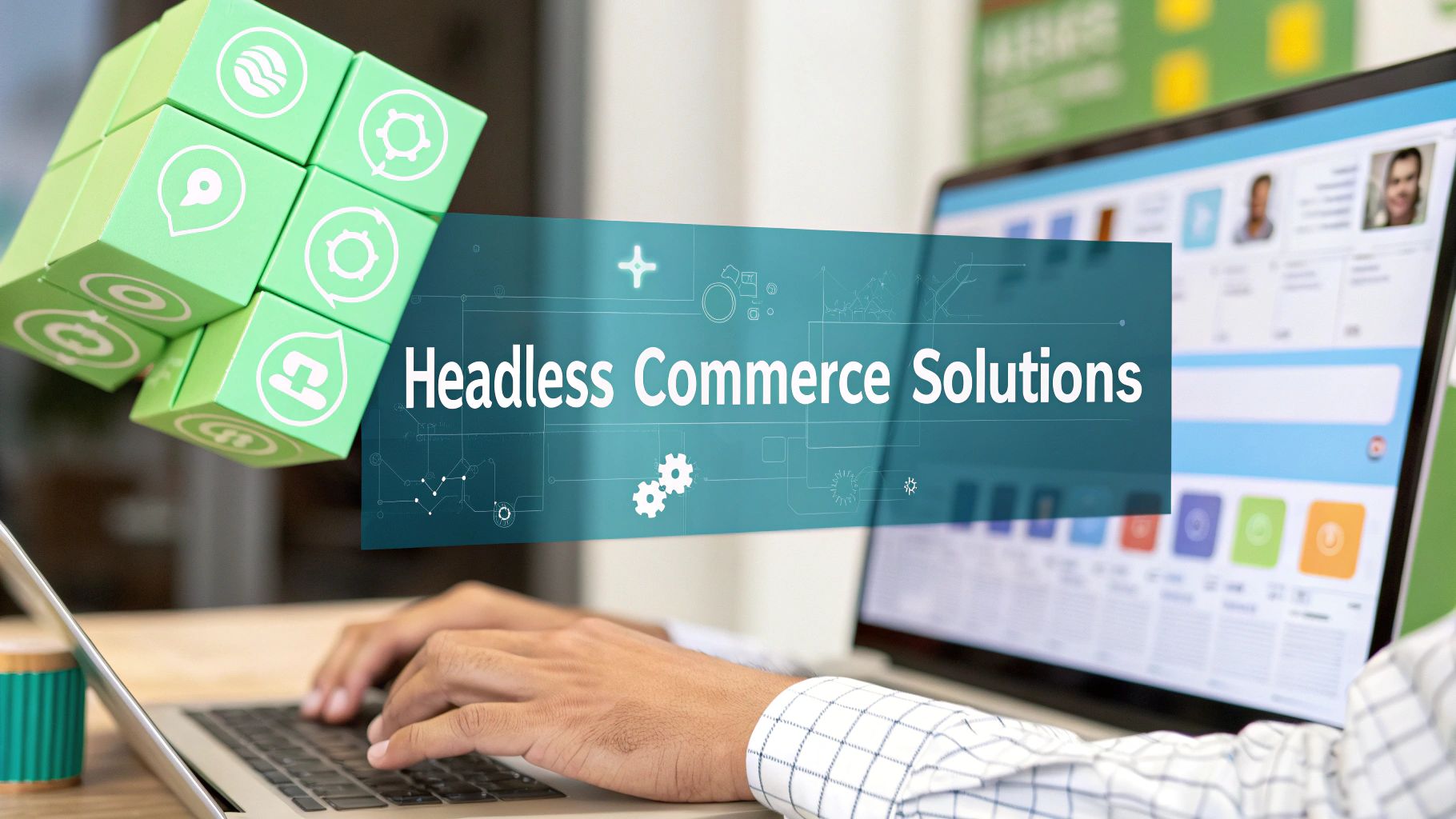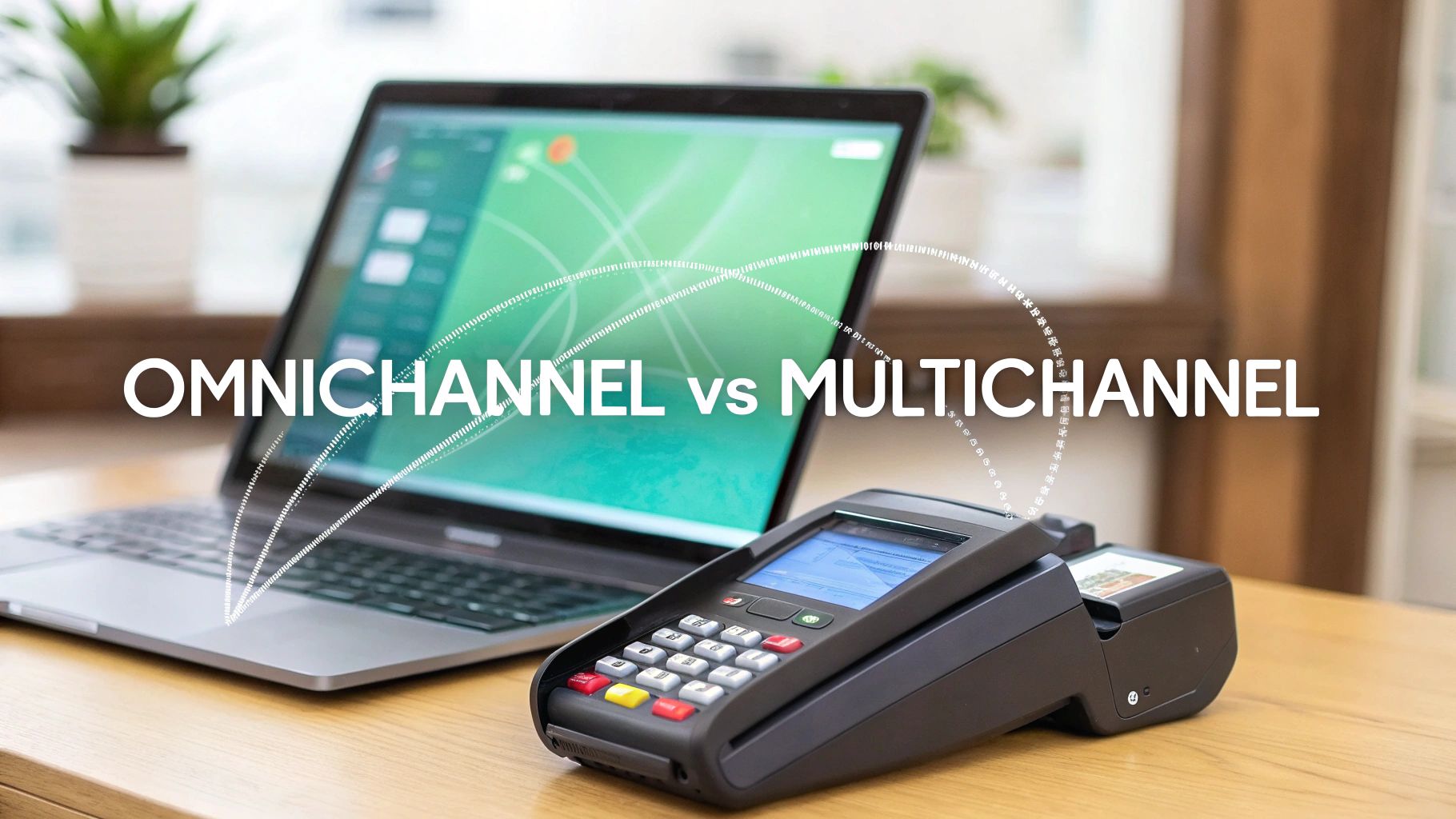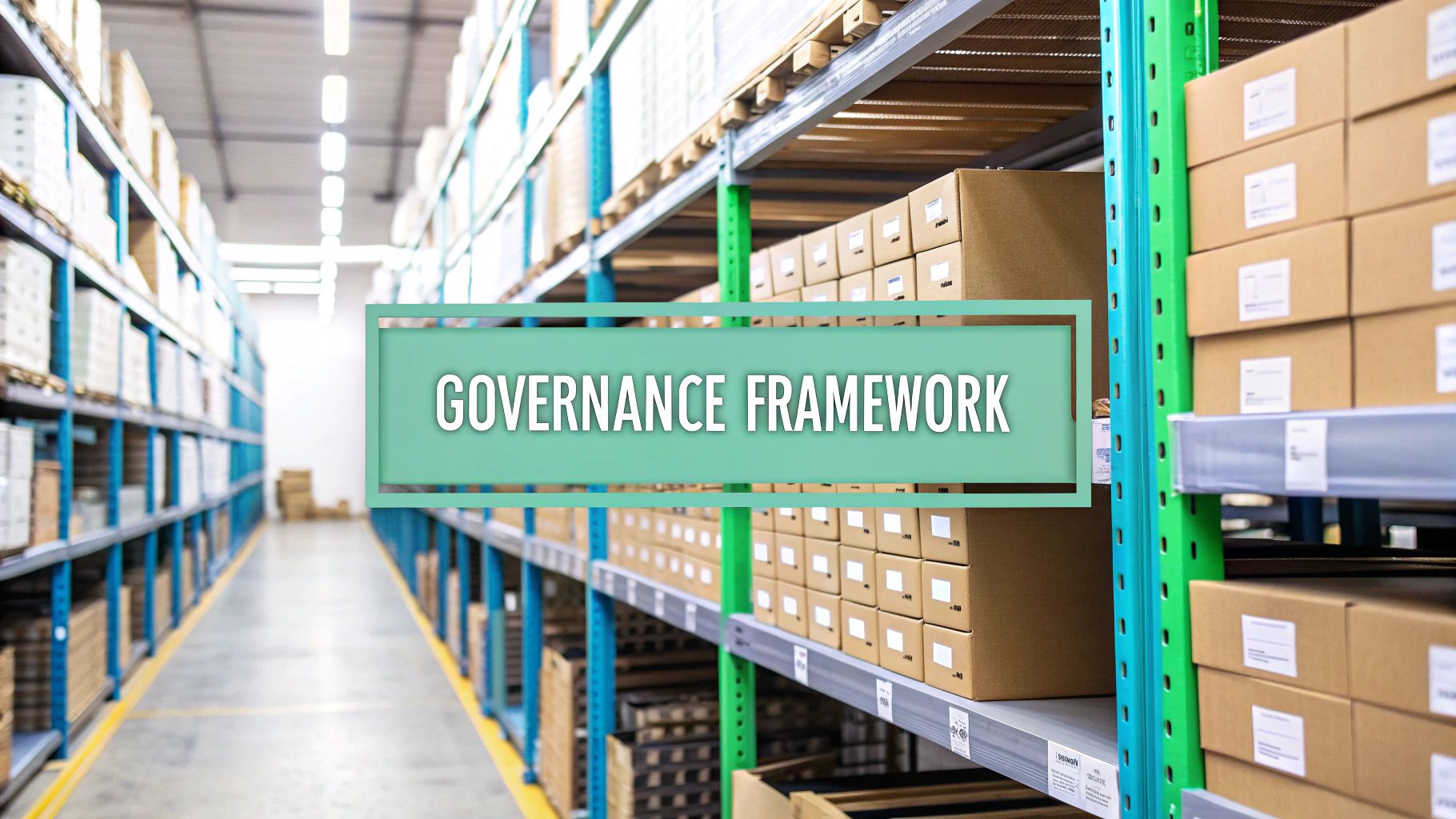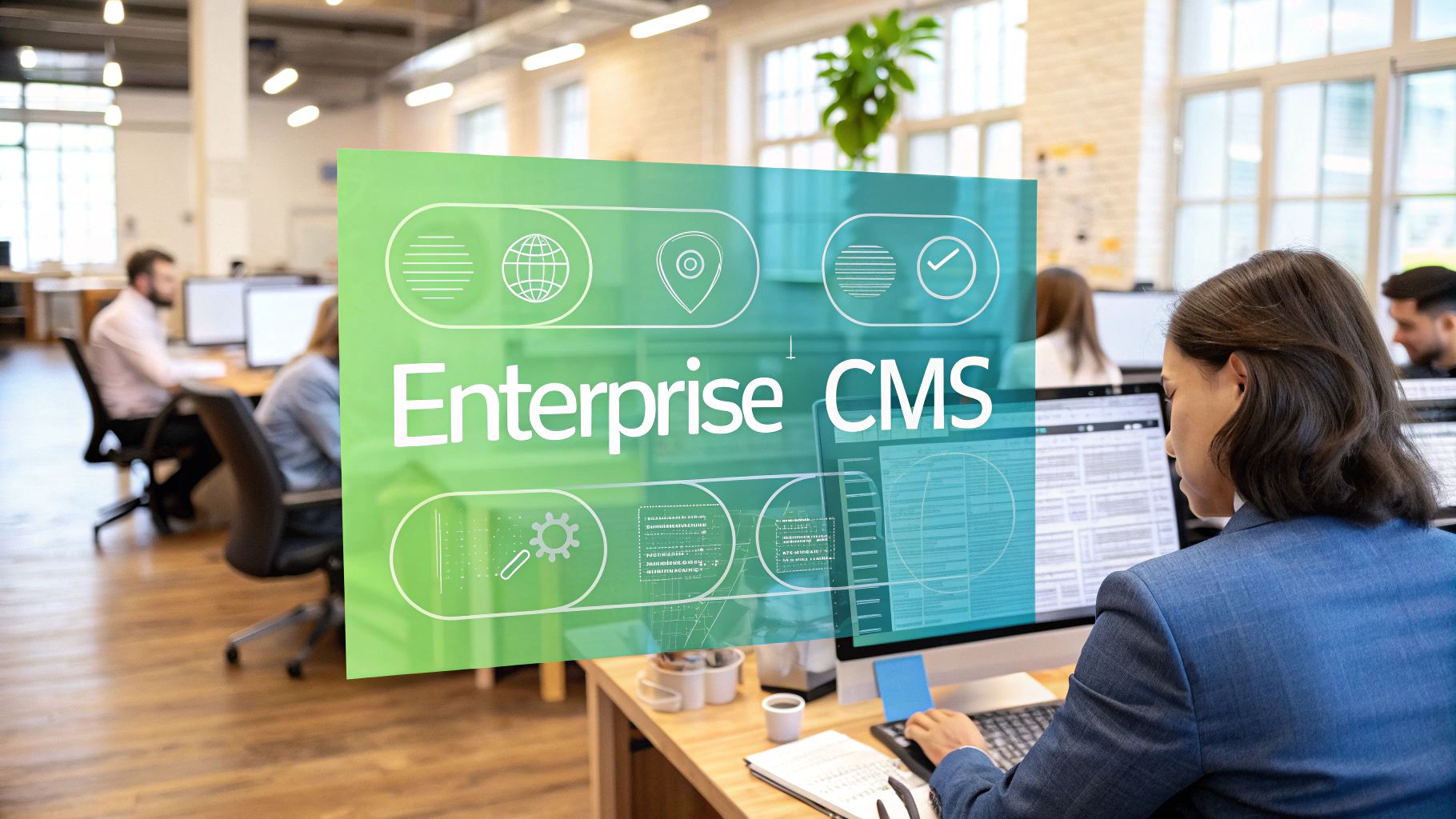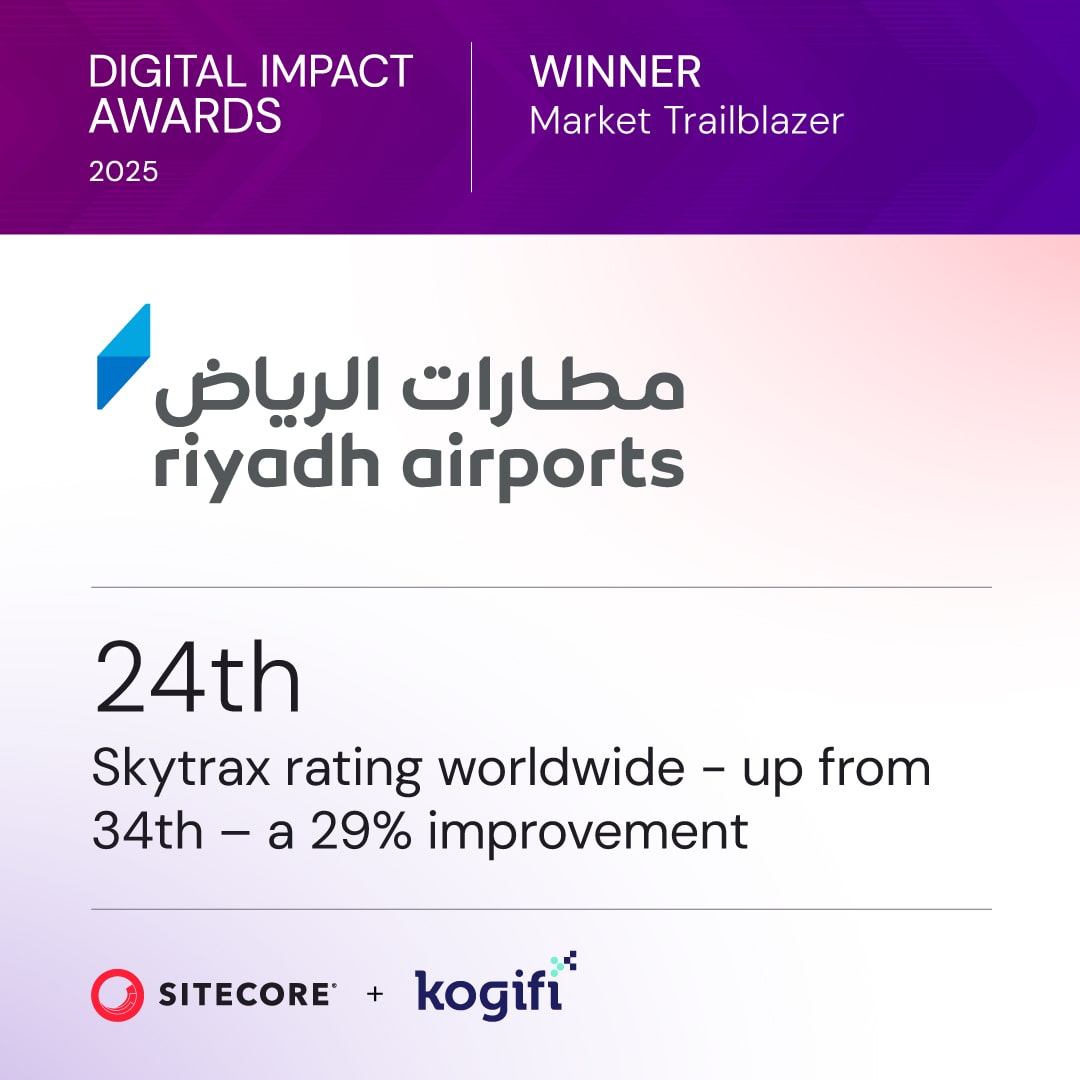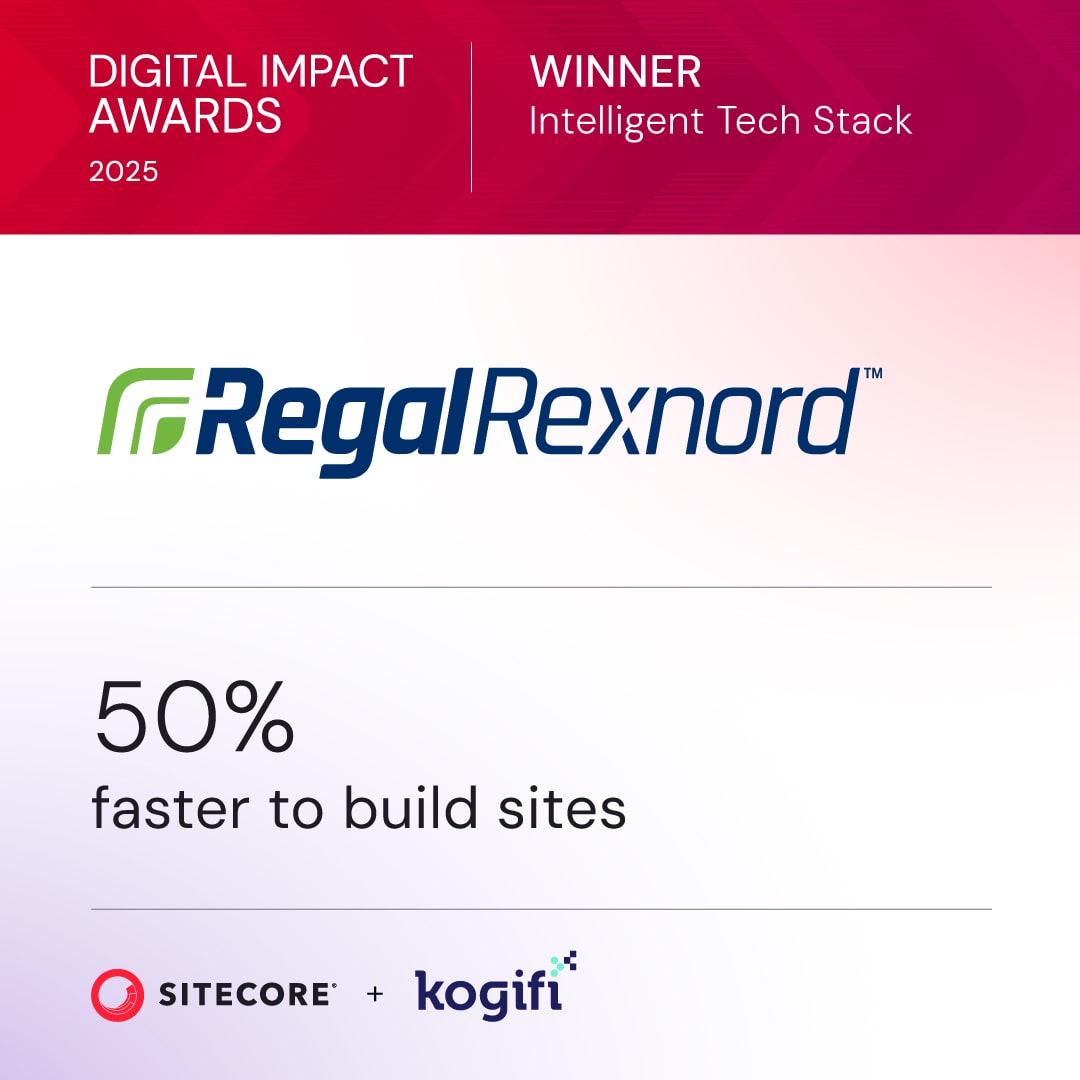Headless commerce is a major shift in how we build online stores. It works by separating the customer-facing "head"—like your website or mobile app—from the back-end commerce engine that handles all the heavy lifting. This API-first approach, championed by platforms like Sitecore, gives you the freedom to create unique, content-rich shopping experiences on any digital touchpoint, without being stuck inside a traditional, all-in-one platform.
Why Modern E-Commerce Is Going Headless
In the past, e-commerce platforms were a lot like pre-built model homes. They were functional and stable, but incredibly difficult to customize. Every single part, from the storefront design and checkout process to the product catalog, was locked into one rigid system. This is what we call monolithic architecture.
While that model worked well enough for simple online stores, it just can't keep up with what modern customers expect.
Today's shoppers move between websites, mobile apps, social media, and even in-store kiosks without a second thought. They expect a consistent, personalized journey at every single step. This is where traditional platforms start to crack. Making a simple change to the customer experience often means diving into complex, time-consuming updates to the entire back-end system, which kills innovation and limits creativity. Before going all-in on headless, it helps to understand the full range of options, including traditional e-commerce store web design packages.
The Decoupled Advantage
Headless commerce breaks that rigid structure apart. Think of it like building with high-end, independent modular components instead of a pre-fabricated kit. The back-end—which handles your inventory, payments, and order logic—operates on its own. The front-end, or the "head," is built completely separately and talks to the back-end using APIs.
This separation, or "decoupling," empowers businesses in some pretty significant ways:
- Innovate Freely: Your marketers and developers can create and update customer-facing experiences without ever touching the core commerce engine. This means you can run A/B tests and roll out new features incredibly fast.
- Deliver Omnichannel Consistency: The same back-end can power a website, a mobile app, an IoT device, or even a voice-activated assistant. This ensures your brand experience feels unified everywhere your customers are.
- Optimize Performance: By separating the front-end, your developers are free to build lightweight, fast-loading storefronts that drastically improve user experience and give your SEO rankings a serious boost.
To make this distinction clearer, let's compare the two approaches side-by-side.
Monolithic vs Headless Commerce at a Glance
The table below breaks down the fundamental differences between the traditional, all-in-one model and the modern, decoupled approach of headless commerce. It highlights how each architecture handles key aspects like flexibility, development speed, and the overall customer experience.
As you can see, the shift to headless isn't just a technical detail—it's a strategic move that opens up a world of possibilities for creating dynamic and engaging shopping journeys.
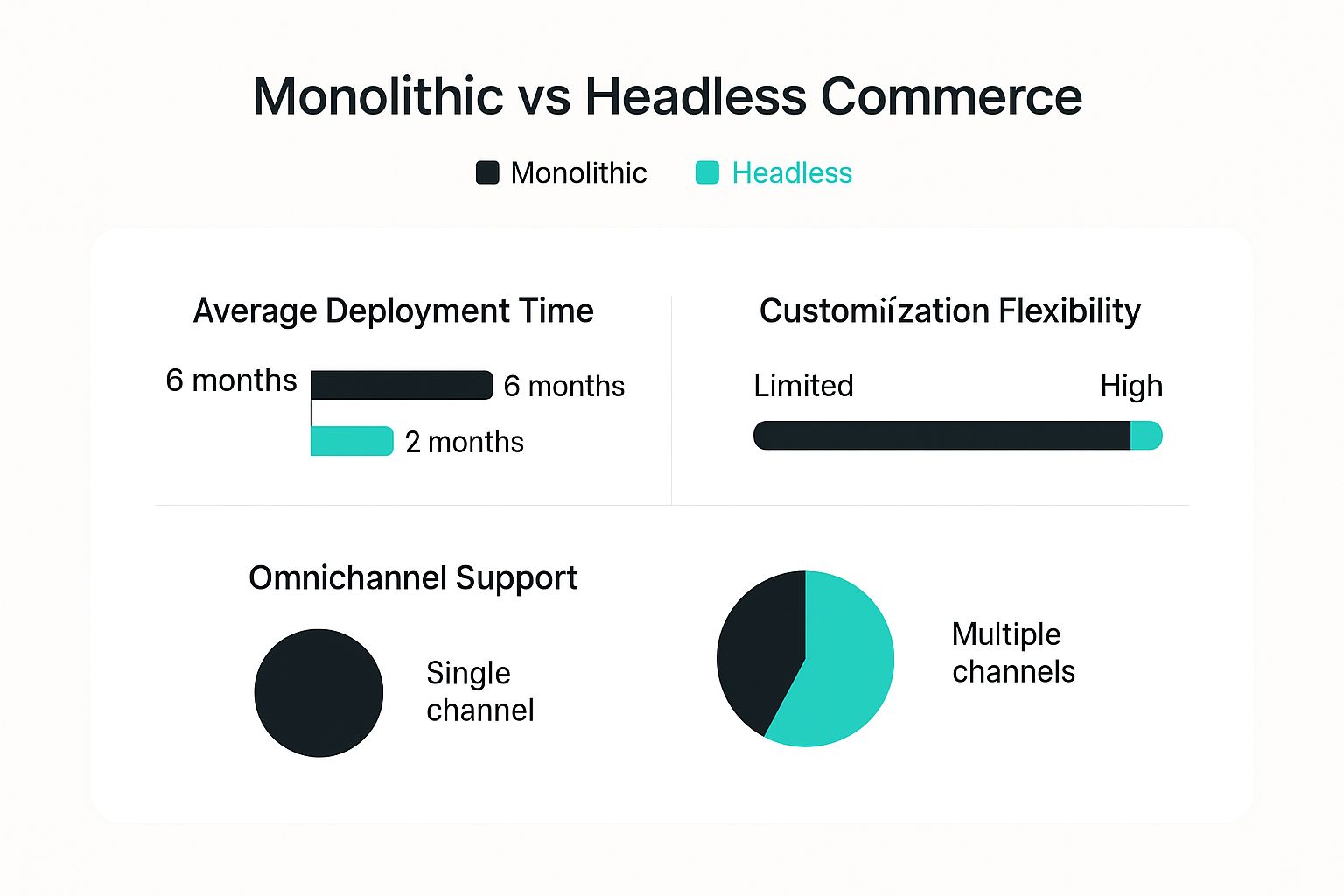
Setting the Stage for Composable Experiences
The global e-commerce market is growing at an incredible pace. By 2025, worldwide e-commerce revenue is expected to top US$ 6.8 trillion. With roughly 21% of all global retail sales happening online and an estimated 2.77 billion digital buyers, the competition is fierce. With over 28 million online stores out there, a superior customer experience isn't just a nice-to-have—it's essential for survival.
This competitive pressure is why industry pioneers like Sitecore have championed the move toward composable digital experience platforms (DXPs). Headless is the cornerstone of a composable strategy, where businesses hand-pick the best tools for each job—commerce, content, search, personalization—and connect them all via APIs. This approach gives you the ultimate flexibility to build a tech stack that’s a perfect fit for your unique business needs, setting a new standard for what's possible online.
Understanding the Composable Architecture
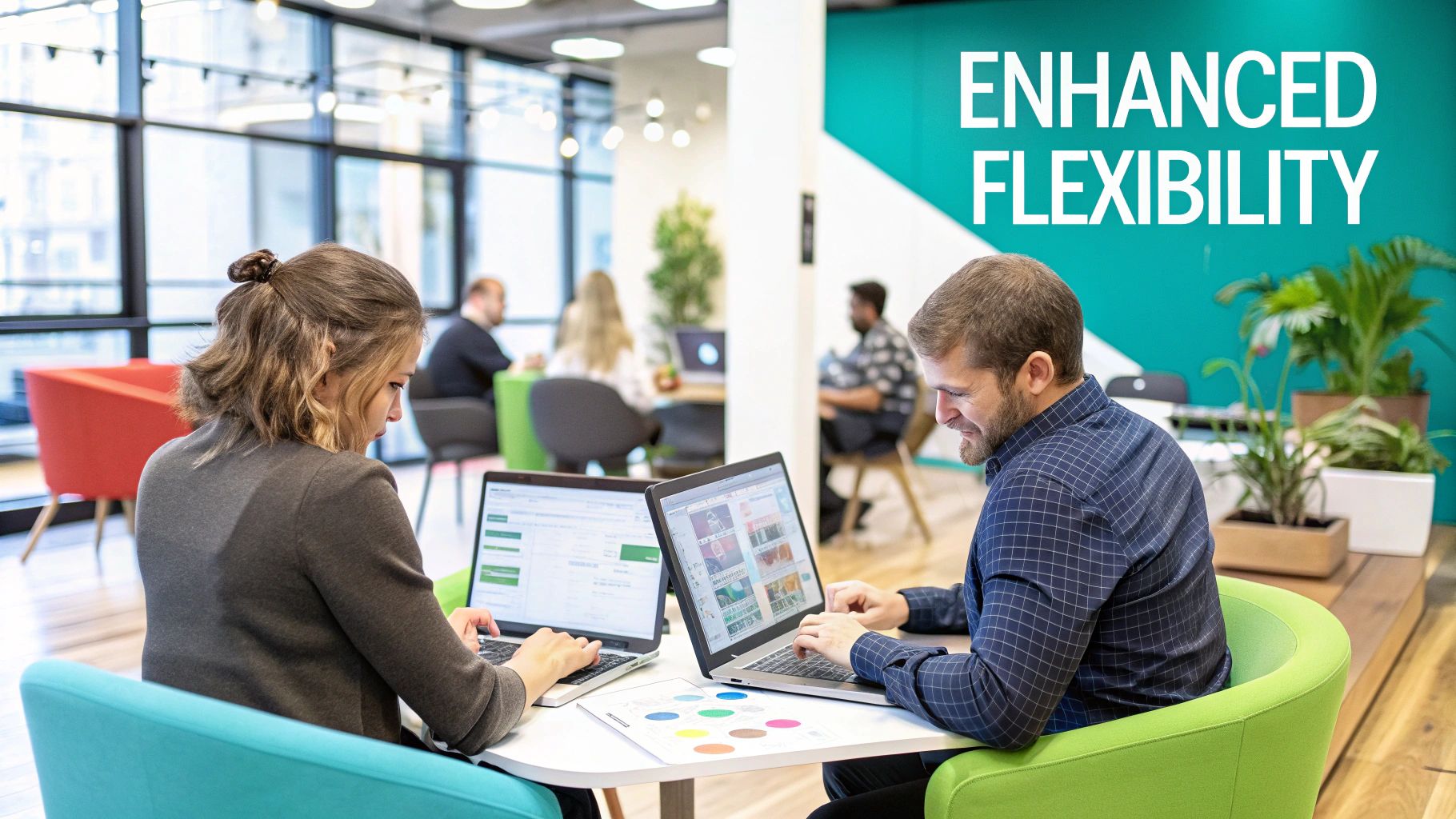
To really get what makes headless commerce solutions tick, you have to look under the hood. The engine driving all this innovation is called composable architecture, and it’s a total departure from the clunky, all-in-one systems of the past. Instead of being stuck with a single, rigid platform, you get to assemble your ideal tech stack from a collection of best-in-class, independent components.
Think of it like building a custom home audio system. The old, monolithic way was buying a pre-packaged stereo where the speakers, amplifier, and turntable are all fused together. If one part breaks or becomes outdated, the whole system suffers. But with a composable approach, you can cherry-pick the best turntable from one brand, a killer amplifier from another, and your dream speakers from a third. You connect them all to create a far superior, personalized sound experience.
The magic that holds this digital ecosystem together is APIs (Application Programming Interfaces). These APIs are the universal translators, letting each separate component—your commerce engine, content management system, payment gateway—talk to each other seamlessly. This constant, high-speed conversation ensures data flows freely between your back-end operations and whatever front-end experience you can dream up.
Core Components of a Modern Stack
A typical composable stack is built from several key services, each a specialist in its domain. This structure is liberating because it frees businesses from vendor lock-in. You get to select the perfect tool for every specific job, weaving them together to create a powerful, unified digital experience.
A modern stack usually includes these building blocks:
- A Headless Commerce Platform: This is the transactional engine handling all the core logic—products, pricing, carts, and checkouts. A great example is Sitecore OrderCloud, which is built on a modern MACH (Microservices, API-first, Cloud-native, Headless) foundation.
- A Headless CMS: This system is your content hub, responsible for storing, managing, and delivering everything from blog posts and hero images to product descriptions. Sitecore XM Cloud is a leading cloud-native CMS designed specifically for this job.
- A Front-End Framework: This is the tech used to build what your customer actually sees and interacts with—the website, mobile app, or even an in-store kiosk. Popular choices like React, Vue.js, and Next.js give developers complete creative control.
A composable strategy empowers you to assemble a digital experience platform (DXP) piece by piece, ensuring that every part of your technology stack is optimized for performance, flexibility, and future growth. This is a significant departure from being limited by a single vendor's capabilities.
How Sitecore and SharePoint Fit In
In this ecosystem, Sitecore offers a powerful, integrated suite of best-in-class tools that work beautifully together. Sitecore OrderCloud is engineered to handle even the most complex B2B, B2C, and marketplace scenarios with its robust API. It does all the heavy lifting for commerce without ever telling you how your storefront should look or function.
At the same time, Sitecore XM Cloud gives marketers a visually rich editing experience to create and manage content that can be pushed to any channel imaginable. When you pair OrderCloud and XM Cloud, you get the backbone of a high-performance, enterprise-grade headless commerce solution. You can dive deeper into how these pieces fit together by exploring our detailed guide on what is composable commerce.
And what about SharePoint? While Sitecore is busy managing customer-facing content and commerce, SharePoint can play a critical supporting role. It’s fantastic for managing the internal content and documentation that supports your e-commerce operations. For instance, it can serve as a central hub for detailed product specs, supplier agreements, or internal training materials, all accessible to your internal teams via APIs. This synergy helps you streamline not just the customer journey, but your internal workflows, too.
Building Your Solution with the Sitecore Composable DXP
When you're building an enterprise-level headless commerce solution, the idea isn't to find one tool that does everything okay. The real goal is to build a tech stack where every single piece is a best-in-class leader. That’s the entire philosophy behind the Sitecore Composable DXP. It's not a monolithic, one-size-fits-all platform; it’s a suite of powerful, independent, API-first products designed to integrate with one another flawlessly.
This approach gives businesses the freedom to build a digital experience platform that’s a perfect match for their unique needs. By hand-picking the best components for commerce, content, and personalization, you can assemble a system that's not only powerful today but also flexible enough to adapt to tomorrow's challenges without needing a complete tear-down and rebuild.
Sitecore OrderCloud: The MACH-Powered Commerce Engine
At the very core of Sitecore’s headless offering is Sitecore OrderCloud. This is much more than just a commerce platform—it’s a true API-first, cloud-native commerce engine built from the ground up on MACH principles (Microservices, API-first, Cloud-native, Headless). This architecture is what gives OrderCloud its incredible power and flexibility.
Think of it like building a high-performance race car. You wouldn't just grab generic parts off a shelf. You’d select specialized components, each one engineered for a specific job—the engine, the suspension, the brakes. OrderCloud works the same way, providing a robust set of microservices that can handle any commerce function you can dream up.
This microservices-first design makes it uniquely suited for complex scenarios that would bring traditional platforms to their knees:
- Complex B2B Scenarios: Easily manage tricky pricing rules, custom catalogs for different buyers, multi-level approval workflows, and quick-order pads.
- High-Volume B2C Retail: Power lightning-fast, scalable storefronts that can handle massive traffic surges during Black Friday without even blinking.
- B2X and Marketplace Models: Build multi-vendor marketplaces or unique direct-to-consumer (D2C) channels, all managed from a single back-end.
And because it's genuinely headless, OrderCloud places zero restrictions on your front-end. Your development team gets total creative freedom to build the exact customer experience you want, using whatever framework they prefer.
Sitecore XM Cloud: Delivering Headless Content
A world-class commerce engine is only half the battle. To create truly engaging shopping experiences, you need world-class content. That's where Sitecore XM Cloud steps in. As a fully cloud-native, headless Content Management System (CMS), XM Cloud is built to deliver content to any channel, anywhere.
It smartly separates the act of managing content from delivering it. This empowers marketing teams to create, edit, and orchestrate content with an intuitive, visual editor—no more filing a ticket with developers for a simple text change. This decoupling means your content can be delivered via APIs to websites, mobile apps, in-store kiosks, and any other touchpoint you can imagine. For any organization looking to get the most out of their investment, understanding the full capabilities of Sitecore's platform is the essential first move.
The real magic happens when OrderCloud and XM Cloud work together. Your product data lives in OrderCloud, while all your rich, storytelling content—blog posts, buying guides, brand stories—lives in XM Cloud. APIs act as the bridge between them, letting you seamlessly blend commerce and content to tell compelling stories that guide customers from discovery to purchase.
Sitecore Discover: Powering Intelligent Search
In today's e-commerce world, a great search bar isn't just a nice-to-have feature—it's an absolute necessity. Sitecore Discover completes the trifecta, adding AI-powered search and personalization to the stack. It goes way beyond basic keyword matching to actually understand what your shoppers are looking for, delivering highly relevant and personalized search results, recommendations, and product listings.
By integrating an intelligent search solution like Sitecore Discover, businesses can dramatically improve product findability, increase average order value through smart recommendations, and create a more intuitive and satisfying shopping experience for every user.
Discover uses machine learning to analyze shopper behavior in real-time, constantly tweaking and optimizing the experience. The system literally gets smarter over time, learning what your customers want and helping them find it faster. When you combine this with OrderCloud's commerce logic and XM Cloud's rich content, you get the perfect formula for delivering the right product and the right message to the right person, every single time.
The rapid adoption of powerful, decoupled systems like this points to a major shift in the industry. The global headless commerce market is on track to grow from an estimated US$ 1.74 billion in 2025 to US$ 7.16 billion by 2032, driven by the unstoppable demand for more agile and personalized user experiences. You can dive deeper into these trends by exploring the full headless commerce market research.
Real-World Business Benefits of a Headless Strategy
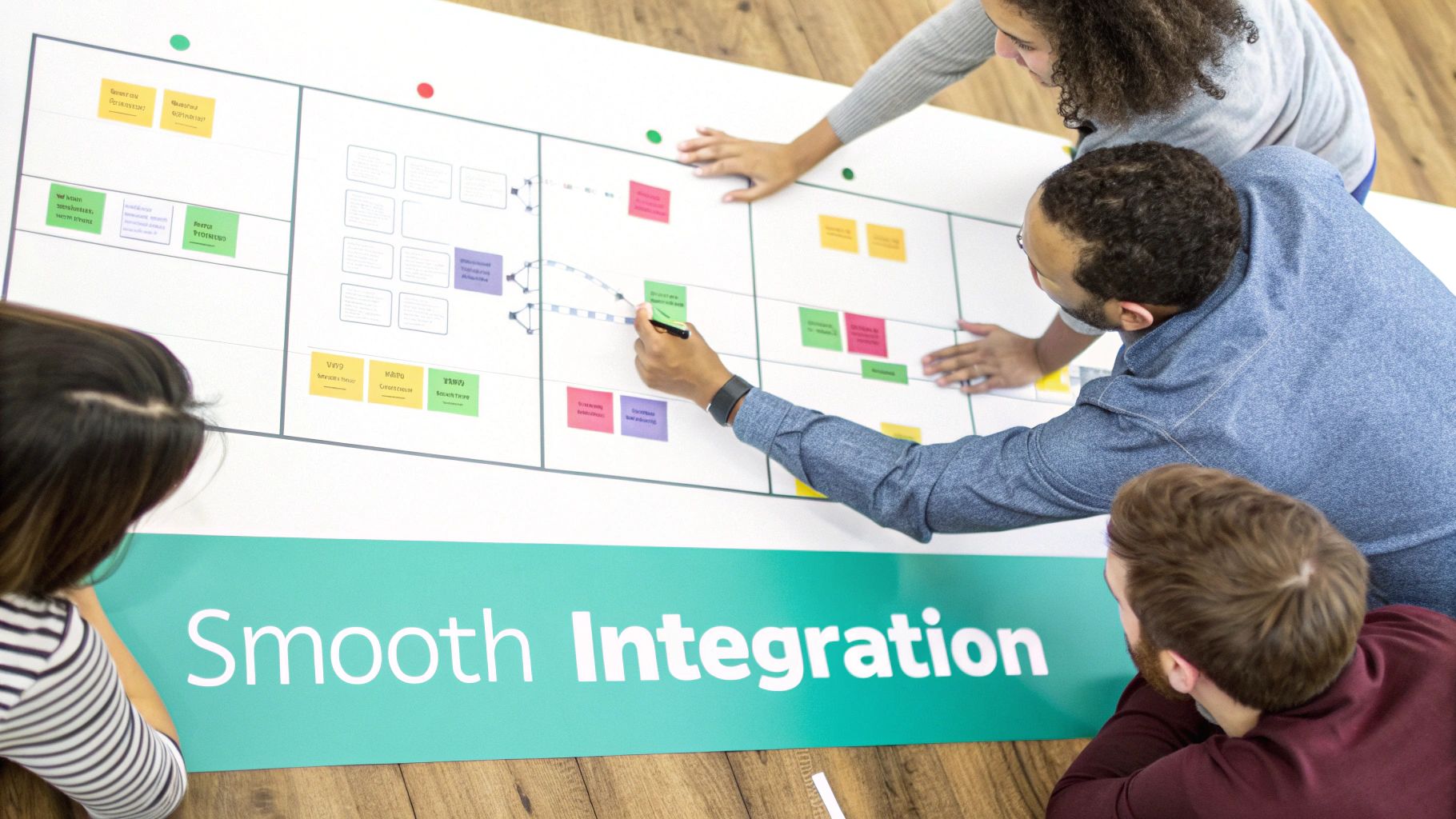
While the tech behind headless commerce solutions is impressive, the real win is what it does for the business. Moving to a headless or composable strategy isn't just an IT project; it's a core business decision that directly shapes revenue, efficiency, and how you stack up against the competition. It shifts you from just reacting to market trends to actually setting the pace.
The most immediate benefit is the total creative freedom it hands your front-end and marketing teams. In a traditional setup, a simple design tweak can cause a domino effect of back-end headaches. With a headless architecture, like one powered by a platform like Sitecore OrderCloud, your designers can build the exact user experience they dream up, using modern tools without being boxed in by old-school templates.
This means you can create truly immersive, content-forward shopping journeys that blur the lines between commerce and storytelling. Think of a luxury brand building an interactive lookbook where customers can buy items straight from a high-fashion video—something next to impossible on a rigid, all-in-one platform.
Accelerate Your Time-to-Market
Another massive advantage is how much faster you can launch new features and enter new channels. Since the front-end and back-end are decoupled, your teams can work in parallel. One team can be refining the core commerce logic in Sitecore OrderCloud while another is building out a brand-new mobile app or an in-store kiosk.
By eliminating dependencies between front-end presentation and back-end logic, businesses can innovate at a much faster pace. This agility allows you to respond to customer feedback and market opportunities in days or weeks, not months or quarters.
Imagine a B2B manufacturer that wants to open a new direct-to-consumer channel. Instead of building a whole new e-commerce site from the ground up, they can just spin up a new "head" (the D2C storefront) and connect it to their existing OrderCloud back-end. This reusability is a huge time and money saver, letting them tap into new revenue streams without missing a beat.
Boost Performance, SEO, and Conversions
In e-commerce, site speed is everything. Slow pages frustrate users and get punished by search engines. Headless architectures built with modern frameworks are naturally faster because they separate the heavy back-end lifting from the lightweight, customer-facing experience.
This separation leads to better Core Web Vitals, which gives your SEO rankings a direct boost and makes for a much smoother user experience. Retailers who have made the switch to headless have seen some pretty amazing results. In fact, many have reported concrete performance gains, with conversion rates jumping by up to 25% and launch times for new digital experiences being cut by 50%. These wins come from the sheer agility that headless provides. You can explore the headless commerce market overview to see more data on these improvements.
Ultimately, a headless strategy is about future-proofing your business. It lets you bring in new technologies and channels as they appear without being chained to an outdated system. This long-term flexibility builds a culture of constant innovation, giving you a lasting competitive edge and a much better return on your tech investment.
Integrating SharePoint for Internal Content Workflows
While a sophisticated DXP like Sitecore is busy orchestrating the customer-facing experience for your headless commerce solutions, another powerhouse is often working behind the scenes to keep internal operations running smoothly. This is where Microsoft SharePoint steps in, not just as a document library, but as a strategic hub for all your enterprise-level content and collaborative workflows.
Think of it this way: your headless front-end is the polished showroom, and Sitecore is the expert curator arranging the displays for maximum impact. In this setup, SharePoint is the immaculate, highly organized stockroom and logistics center. It’s where your teams create, manage, and approve all the essential documents that support every single product you sell—from detailed technical specs and compliance paperwork to internal training manuals and marketing campaign briefs.
Connecting Internal Assets to External Experiences
The real magic happens when you integrate SharePoint into your headless ecosystem. By using APIs, like the Microsoft Graph API, you can build a bridge between your internal document repository and your customer-facing platforms. This connection allows critical information, once locked away in internal drives, to appear exactly where and when it's needed.
This opens up some powerful opportunities to enrich the customer journey without cluttering your core DXP. For example:
- B2B Product Documentation: A customer buying complex industrial equipment might need instant access to an installation guide or a safety data sheet. Instead of manually uploading and updating these PDFs on your commerce platform, your front-end can pull the latest approved version directly from a SharePoint document library with a simple API call.
- Rich Media Asset Management: Your marketing team can use a SharePoint library to centralize high-resolution images, product videos, and brand assets. These files can then be programmatically called by your front-end, guaranteeing brand consistency across every digital touchpoint.
- Compliance and Legal Information: You can ensure that warranty information, terms of service, or regional compliance documents displayed on your site are always the single source of truth. All of it is managed and version-controlled within SharePoint’s rock-solid governance framework.
By treating SharePoint as a headless repository for operational content, you decouple internal content management from the customer experience layer. This streamlines workflows, reduces content duplication, and ensures that the information your customers see is always accurate and up-to-date.
SharePoint and Sitecore: A Powerful Combination
Integrating SharePoint doesn't replace a DXP like Sitecore; it makes it better. While Sitecore excels at creating personalized, content-rich journeys for the customer, SharePoint is built to handle the structured, process-driven world of enterprise content. This clear division of labor lets each platform shine.
For instance, a global marketing campaign might be planned, drafted, and approved within a SharePoint workflow. The final campaign assets and messaging guidelines live there, but the actual customer-facing content—the landing pages, personalized emails, and promotional banners—is built and delivered through Sitecore XM Cloud.
This synergistic relationship is a perfect example of modern composable architecture in action. By playing to the strengths of both platforms, businesses can create a digital ecosystem that is highly efficient, scalable, and secure. This approach not only supports a more agile and responsive e-commerce operation but also gives internal teams the clear, streamlined processes they need to succeed. The end result is a more robust and capable headless commerce solution.
Charting Your Course for a Smooth Headless Transition
Making the move to a headless commerce solution is a major undertaking, but it’s one that unlocks incredible agility and far richer customer experiences. Getting there successfully isn't about flipping a switch, though. It demands a clear, phased roadmap that considers your technology, your internal processes, and—most importantly—your people.
Everything starts with a deep-dive discovery phase. This is non-negotiable. Before you write a single line of code, your team needs to get crystal clear on your business goals. What, exactly, are you trying to achieve? Are you aiming to slash your time-to-market? Create a unified experience across every single channel? Or just give your front-end developers the creative freedom they've been asking for? The answers to these questions will shape every decision you make down the line.
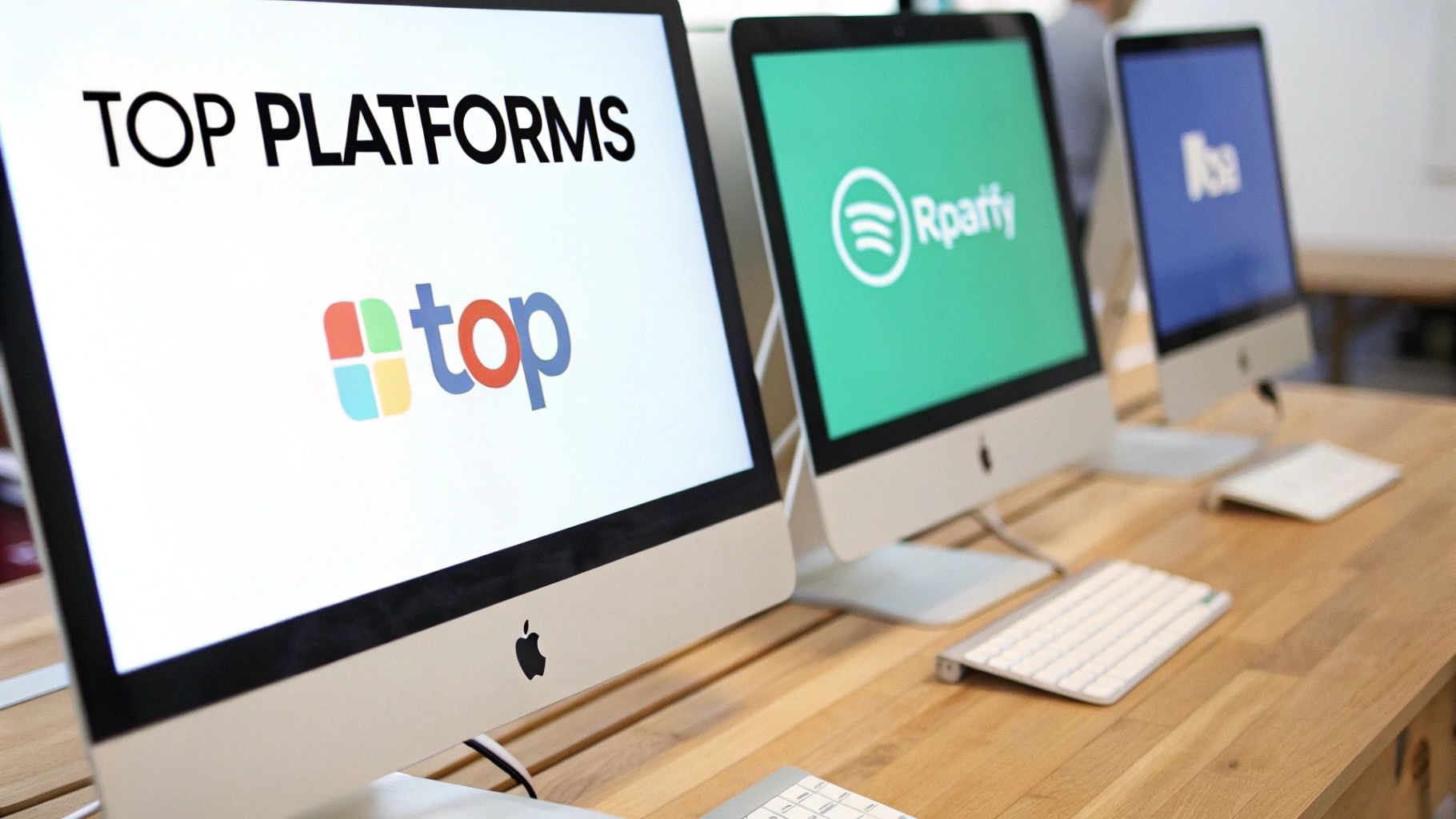
Nail Down Your API Strategy First
Once your goals are set, it’s time to architect the nervous system of your new headless ecosystem: your API strategy. A well-designed API layer is what guarantees smooth, instant communication between your back-end systems—like a powerful commerce engine such as Sitecore OrderCloud—and whatever customer-facing experiences you dream up.
Think of your API strategy as the blueprint for your entire digital operation. It needs to be built for performance, security, and scale from day one. This means selecting the right API gateways, locking down authentication, and creating documentation so clean that your developers can hit the ground running.
This is also the stage where you figure out how other critical systems, like SharePoint, fit into the puzzle. For instance, your API strategy should clearly define how product spec sheets or compliance documents stored in SharePoint can be pulled automatically and displayed on your product pages. This keeps everything consistent and accurate without anyone having to update content in two places.
It's a Technical Shift, But a Cultural One, Too
Here’s a truth many teams overlook: going headless is just as much a cultural change as it is a technical one. Your development, marketing, and operations teams have to learn to work in a much more agile and collaborative way. No more siloed workflows. Front-end and back-end teams will now be working in parallel, which makes clear communication and a shared vision absolutely essential.
To keep the transition on track, you'll need a solid plan for a few key areas:
- Data Migration: You need a rock-solid plan for moving your product catalogs, customer data, and order histories over to the new platform. This has to be handled with extreme care.
- Security Protocols: With data flowing through APIs, you need to implement ironclad security measures. Every single endpoint needs to be secured to protect customer and company data.
- Performance Optimization: The whole point of headless is speed. You have to continuously monitor and tune the performance of your APIs and front-end applications to deliver those lightning-fast experiences users expect.
This is why choosing the right implementation partner is so critical. Finding a team with proven expertise in platforms like Sitecore and SharePoint can make all the difference. They’ve navigated these waters before and can help you sidestep common pitfalls, ensuring your transition doesn't just get done, but sets you up for years of growth.
Frequently Asked Questions
Jumping into headless commerce solutions can feel like learning a new language, especially when you're looking at powerful platforms like Sitecore and figuring out how they play with enterprise systems like SharePoint. Here are some straightforward answers to the questions we hear most often.
What Is the Main Difference Between Headless and Traditional Commerce?
Think of traditional commerce like a pre-built house. The storefront (front-end) and the plumbing, electrical, and foundation (back-end) are all one fixed unit. Want to move a wall? It’s a major renovation.
Headless commerce, on the other hand, is like building with high-tech LEGOs. The back-end commerce engine—your product catalogs, order processing, and inventory—is the “body.” The front-end experiences—your website, mobile app, or smart kiosk—are the interchangeable “heads.” They’re completely separate but talk to each other through APIs.
This separation gives your developers total freedom to build unique, engaging customer experiences on any channel using the best tools for the job. And since all those different "heads" connect to the same back-end, your data stays consistent everywhere.
How Does Sitecore OrderCloud Fit into a Headless Strategy?
Sitecore OrderCloud isn't just another commerce platform; it’s a pure, API-first commerce engine built from the ground up on MACH principles (Microservices, API-first, Cloud-native, Headless). It’s designed to be the powerful, flexible back-end "body" in your headless architecture.
It’s built specifically to handle the messy, complex logic that comes with B2B, B2C, and marketplace scenarios, all without telling your front-end team what they can or can’t build.
Its core strengths are:
- Managing complicated product catalogs and pricing rules.
- Processing orders and handling inventory with precision.
- Handling the intricate buyer roles and permissions needed for B2B.
With OrderCloud, you get a commerce foundation that can scale to any demand, giving your front-end team the room to innovate without bumping into technical limits.
Can SharePoint Be Used in a Headless Commerce Solution?
Absolutely. While Sitecore is busy running the customer-facing digital experience, SharePoint is a fantastic headless repository for all the internal and operational content that supports it. Think of it as your secure, central library for critical documents like detailed product specs, compliance paperwork, or marketing assets.
Using APIs, your front-end can pull this information directly from SharePoint when needed. For instance, a B2B buyer on your product page could click to view a technical manual, which is fetched directly from a secure SharePoint site. This ensures the information is always the single source of truth without duplicating content across systems.
What Are the First Steps to Migrate to Headless?
The first and most important step is a thorough discovery phase. Before you write a single line of code, you need to get crystal clear on your business goals and audit your current tech stack. What are you actually trying to achieve? Faster time-to-market? A consistent omnichannel experience? More design freedom?
Once you have that clarity, the next move is to develop a solid API strategy. This is your blueprint that details how your new headless commerce engine, CMS, and other systems will communicate. Nailing this initial planning is crucial for a smooth transition and ensures your new architecture is scalable, secure, and ready for whatever comes next.
At Kogifi, we live and breathe this stuff. We architect and implement powerful headless commerce solutions using Sitecore and SharePoint. If you're ready to build a flexible, future-ready digital experience, we can help. https://www.kogifi.com

















